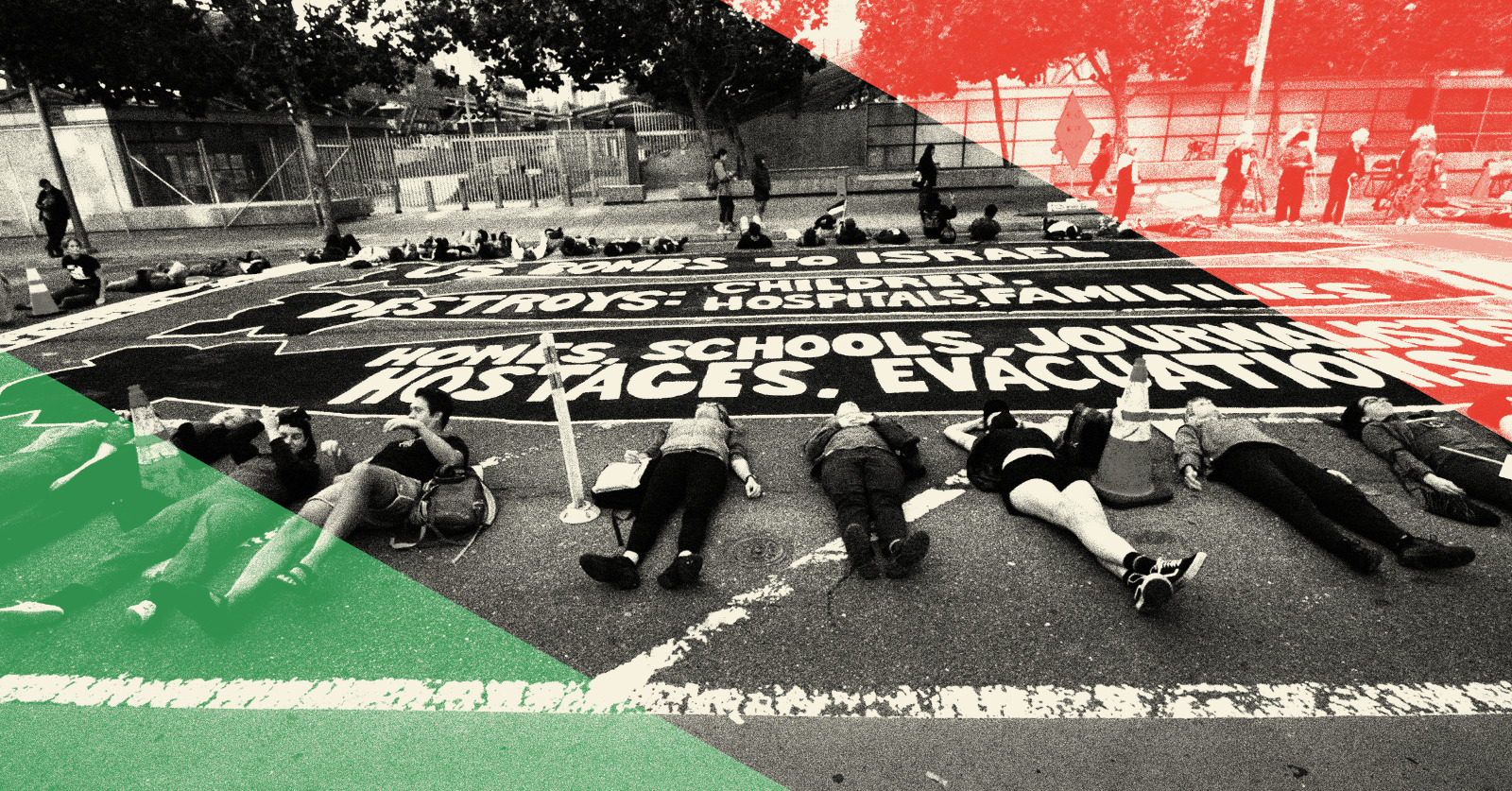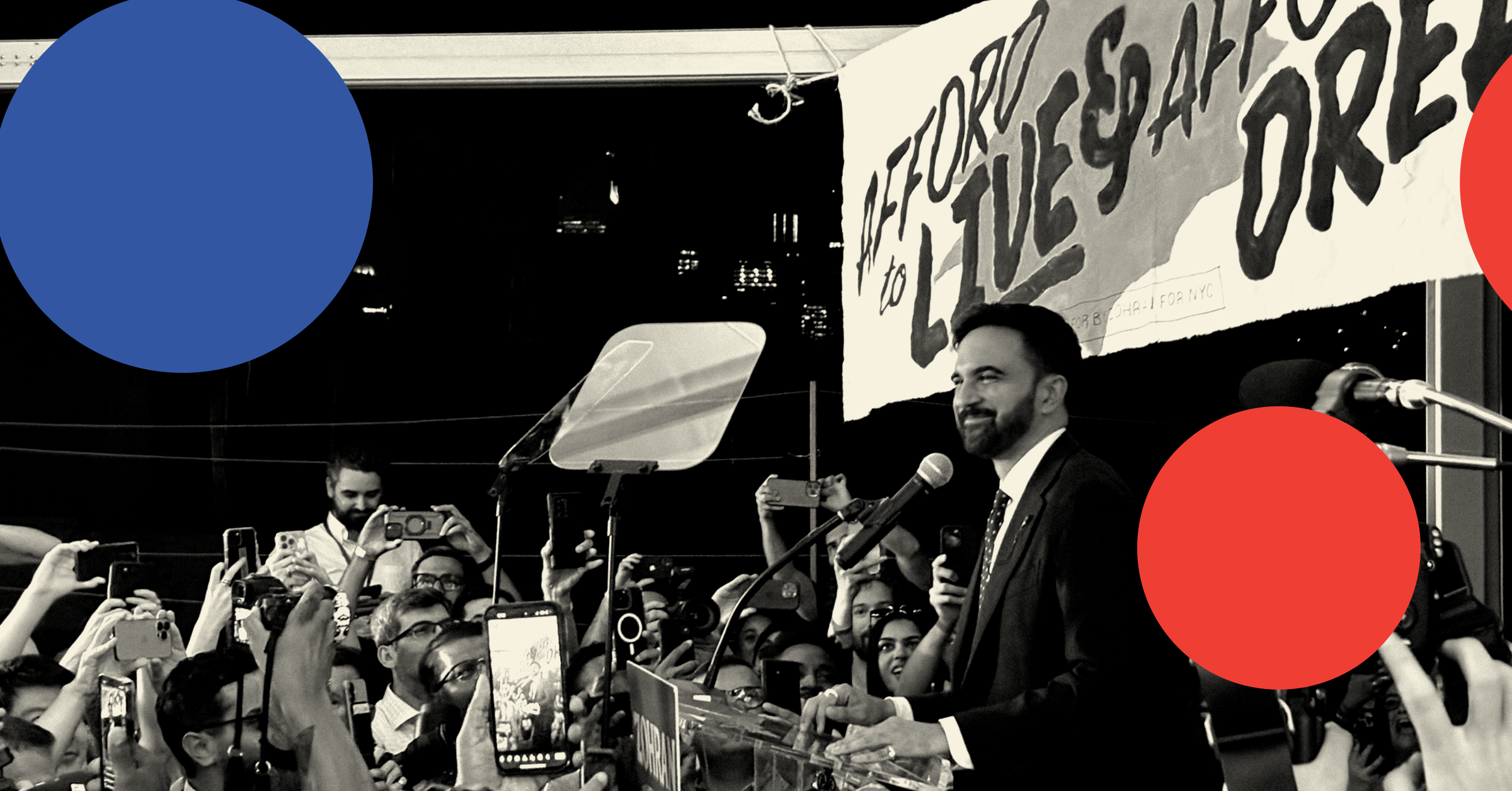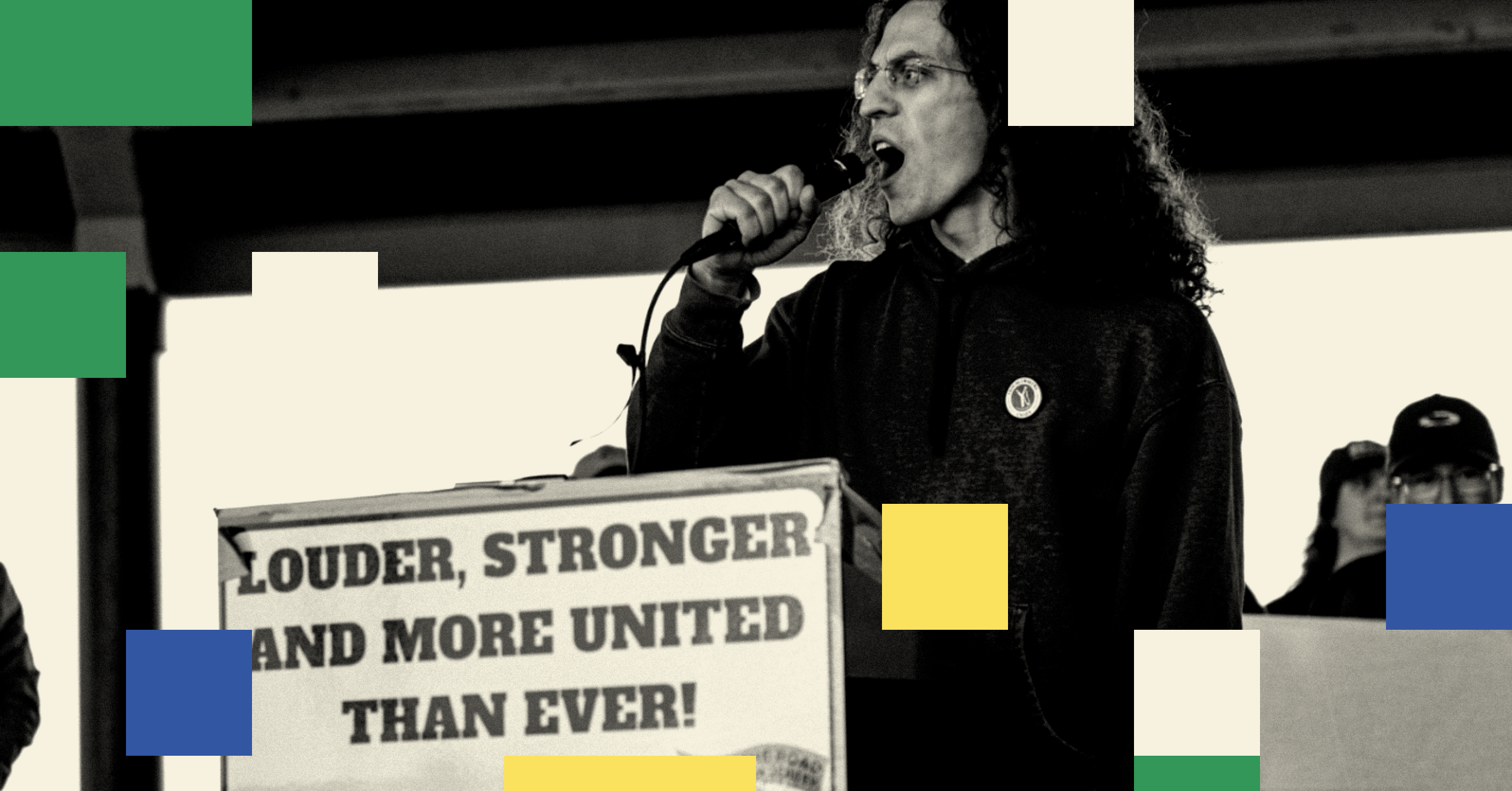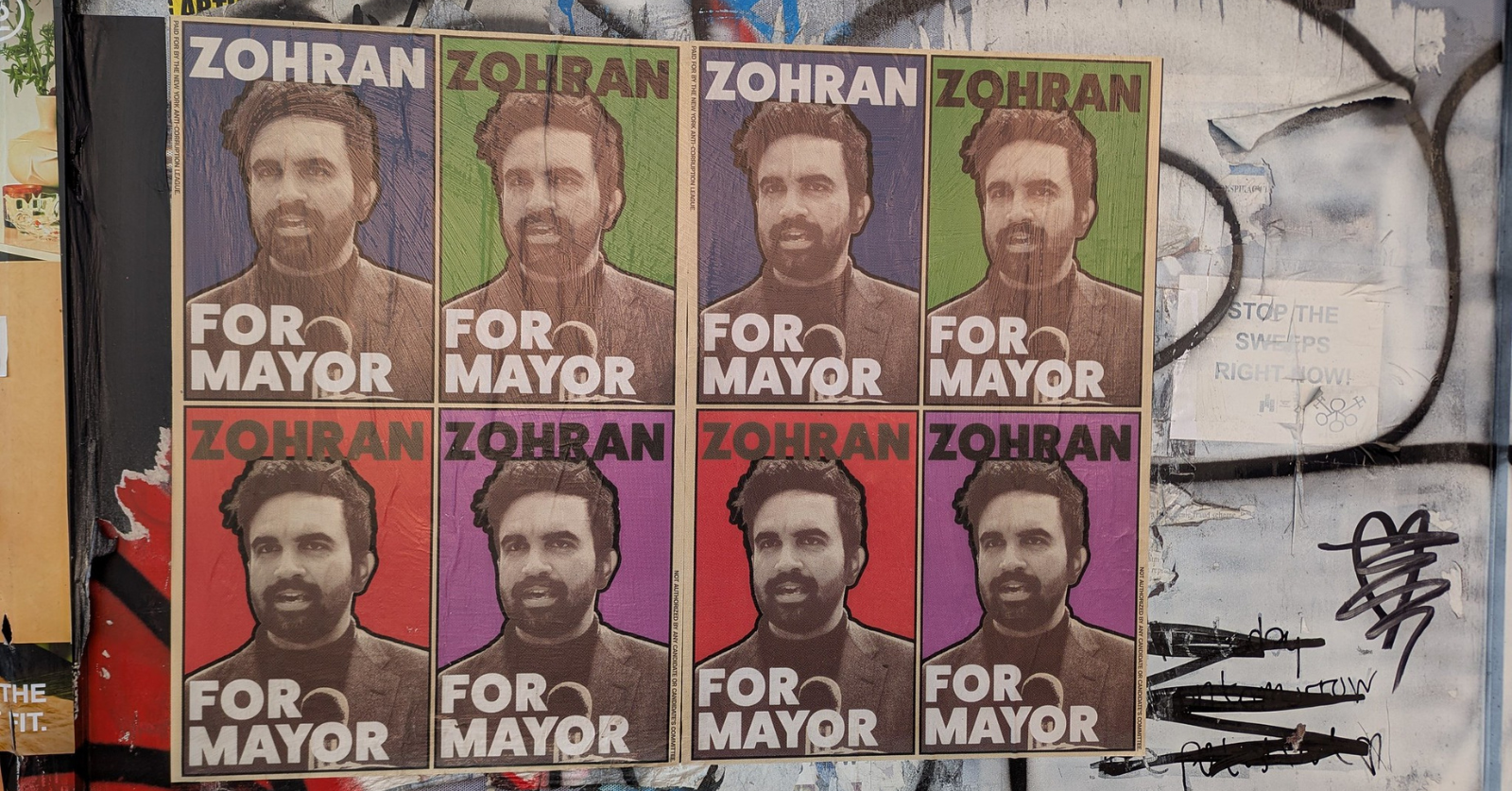The major, unavoidable political question in the US today is the genocide in Gaza. The Biden administration, backed by the vast majority of Democratic and Republican leaders, is offering money and weapons to Israel to carry out a mass slaughter of Palestinians. The campaign is unpopular, and the vast majority of people in the US support a ceasefire to bring it to an end.
In flouting this popular demand, the Biden administration and the Democrats are courting a major political crisis. How long can they persist in supporting Israel’s genocidal campaign when public opinion is so aggressively opposed to their policy?
Nevertheless, while the Biden administration continues to flout popular calls for a ceasefire, its basic pro-Israel orientation is still broadly supported. Most polls find a majority of Americans lean toward Israel in their sympathies.
The problem for the Biden administration and the Democrats however is that for a critical section of their party’s base — young Democrats between eighteen and thirty-five — the pro-Israel position is positively toxic. That’s teeing up a base crisis for the party, a crisis with many precedents but with no ready leader yet on offer to turn it from a possibility into a political reality.
A Crisis in the Democratic Base
The Democratic Party’s crisis in its own base is potentially profound. A Quinnipiac poll showed that 69 percent of Democrats eighteen to thirty-five disapprove of Biden’s policy on the Gaza genocide. Asked who they sympathize with more, 74 percent of young Democrats said their sympathies leaned toward Palestinians.
A poll conducted in late October by the University of Maryland Critical Issues group and Ipsos showed that the administration’s policy creates a serious potential for defection from Biden’s ranks in the general election next year. The poll found that the percentage of young Democrats who said that the Biden administration’s policy on the Gaza crisis would make them less likely to vote for Biden was 9 percent in late October but 21 percent in early November — and that has almost certainly risen since.
Interviews show the same basic problem, especially among young Muslim Americans in critical swing states like Michigan. Ibrahim Ghazal, a law student at Wayne State, told CNN: “Not in a million years would I like to vote for (Donald) Trump. I don’t know if I am voting at all. But I definitely will not be voting for Biden.”
Precedents
The crisis brewing in the Democrats’ base is not without precedent. Since 1990, at least four big crises have shaken up the two major parties. These crises each involved popular backlashes provoked by major policy decisions. These base crises include:
1. Clinton and the Democrats supported NAFTA and lost Southern workers in the 1990s.
In 1993, Bill Clinton’s administration signed the North American Free Trade Agreement (NAFTA), ditching the Democrats’ position as the more protectionist of the two parties. NAFTA wreaked havoc on many local economies that were dependent on manufacturing jobs, especially in the South. The affected communities were packed with working-class voters who had been loyal to the Democratic Party for generations — and were still voting Democrat in national elections as late as the early 1990s (hence why Clinton was able to win Georgia, Louisiana, Arkansas, Tennessee, Kentucky, and West Virginia in 1992).
As social scientists have convincingly shown, the aftershocks from NAFTA jacked up unemployment dramatically in these counties where Democrats were still very competitive, and effectively ejected millions of working-class voters from the party. Many Southern workers especially dropped out of political life or switched to the GOP, and Democrats’ competitive position in the South collapsed.
2. Bush and the GOP stoked Islamophobia and lost Muslims in the early 2000s.
A similar, if smaller, base crisis happened for the GOP with Muslim Americans. In the 2000 presidential elections, George W. Bush did surprisingly well among Muslim voters. Some polls suggested that identification with the Republican Party rose to as high as 70 percent among Muslim voters in 2000. Growing Republican support among this community gave the GOP hope that it could one day ride a wave of support in Muslim communities to crack Democrats’ control over Michigan. But those hopes did not last. After 9/11 and the Iraq War and a wave of Islamophobia in the United States, Muslims’ identification with the Republicans fell to the low teens.
3. Republicans declared war on undocumented immigrants and alienated Latinos in the late 2000s.
In late 2005, Republicans embraced an aggressively anti-immigrant proposal drafted by Wisconsin Republican Jim Sensenbrenner. The following year, the bill inspired mass protests of millions defending undocumented immigrants in the US. The protests worked, and Sensenbrenner’s bill was defeated. At the same time, the GOP’s lurch to the right on immigration produced a sizable shift of Latino voters toward the Democratic Party and undermined Republican hopes of building a new base in that community for at least a decade.
4. Obama and the Democrats failed to tackle rising inequality and radicalized young people in the early 2010s.
Young progressives had high hopes when Barack Obama was elected in 2008, but the administration’s failure to hold Wall Street accountable for the financial crisis or meaningfully tackle rising inequality led to deep dissatisfaction. Early stirrings of this dissatisfaction were evident during the Occupy Wall Street protests in 2011. Young progressives’ lurch to the left was on full display in 2015–16 when they formed the core base for Bernie Sanders’s insurgent presidential campaign.
The Challenge for the Left in 2023
The potential base crisis for the Democratic Party now is serious. For decades, Democrats have positioned themselves as the reliable center-left option for voters. Compared to the GOP, they present themselves as the basically humane alternative with alleged progressive impulses, even if they’ve always had a ready excuse for why those impulses can’t be acted on. Democrats’ full-throated support for Israel’s genocidal campaign — greenlighting financial and material support for the assault, minimizing the scale of the atrocities, and unleashing their most ghoulish elements on halal cart vendors — has smudged that carefully crafted picture. And young progressives have been the first to signal they’re ready to jump ship.
What’s at stake is a group numbering at least 30 million strong. That’s the 77 million people living in the US who are eighteen to thirty-four multiplied by 51 percent, the percentage of those in the same age range who identify as a Democrat, and then multiplied by 74 percent, the percentage of young Democrats who sympathize with Palestine. (Of course, the potential base of people with left-of-center politics and sympathies for Palestine is much larger, stretching across age bands and into independents and even the Republicans. And if anything the politics of teenagers lean even further left. But 30 million is a good first approximation.)
There’s a huge opening for the nascent left in the United States to dig in much deeper in this base. Winning a ceasefire to stop the genocide, reversing US policy on Israel, and pushing through a transformative agenda to redistribute wealth and power here at home all hinge on the left’s base-building work in this moment.
The challenge for the left is that its tools for base building are limited. In each of the four base crises since 1990, a widely recognized and developed political leadership was on offer to organize an aggrieved base and reorient it. In the 1990s as NAFTA wreaked havoc on manufacturing towns, conservatives in the Republican Party organized a critical mass of discontented Southern workers. In the 2000s, Democrats actively brought Muslims and Latinos who were alienated by the GOP back into the party. In 2015 and 2016, a socialist senator from Vermont gave young progressives fed up with the Obama administration a new campaign to channel their energies into.
But who today will organize this new base of almost 30 million young Democrats radicalized against their party by the Biden administration’s Gaza policy?
Sanders is a well-known figure with a sophisticated comms apparatus at his fingertips, but he has tragically lined up behind Biden on this issue. That means that the role of providing political leadership to this new generation may fall to his most notable descendants: the Squad and DSA. However, each of these groups must overcome challenges of their own to play a role in leading the new base.
The Squad, and in particular Rashida Tlaib, have shown real courage and political clarity in the crisis, and they are increasingly well-known among young progressives. Yet they don’t yet have the ability or possibly even the ambition to organize on a national scale. (As an excerpt from Ryan Grim’s new book on the Squad suggests, the Squad is not an internally organized group and has let its most important organizing force, Justice Democrats, wither.)
The best hope might be an organization like the Democratic Socialists of America, but it has yet to really offer a call to organize at a mass scale as it did in 2016. DSA has grown somewhat since the start of October, but it is not yet growing again at a clip comparable to its takeoff in 2016. The question of what it would take for DSA to lead even a critical mass of the 30 million young people who are so dramatically out of step with their party deserves a lot more consideration.
For now, the potential is there: millions of young left-leaning progressives radicalized against their party leadership, whose policies are completely opposed to the young progressives’ values and priorities. But the crisis cannot advance until a new and credible leadership option puts itself forward to play the role of organizer.
This article was originally published at Left Notes.




